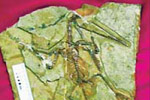US
The US blunders in excluding China on cleantech
Updated: 2011-01-19 14:37
By Robert F. Kennedy Jr (China Daily)
When Chinese President Hu Jintao meets President Barack Obama on Wednesday, America’s new enthusiasm for trade restrictions against Chinese renewable technologies may mar the conversation.
Last Friday, President Obama signed a defense appropriation law including a “Buy American” provision prohibiting the Pentagon from purchasing Chinese solar panels.
This constraint piles on top of a US government launched WTO case intended to reduce imports of Chinese wind turbines. I have long advocated a national energy policy that will release America’s monumental renewable potential, but a trade war with China over renewables is a terrible idea — for American jobs, prosperity and the environment.
The Chinese have indeed mounted a robust and successful challenge to European and American dominance of solar panel and wind turbine manufacturing. Chinese companies now account for half of the world’s solar panel production. But the US gains far more in the way of jobs and prosperity from China’s low-cost solar panels and super-efficient wind turbines than we lose.
These gains come from benefits to American manufacturers, investors and consumers.
On a recent visit to China, I toured solar panel plants owned by the nation’s largest manufacturers including Yingli Solar and Daqo New Energy. Like most of China’s manufacturers, Yingli’s solar panel factories in Hainan and Baoding use dozens of giant steel casting furnaces made by GT Solar, a Merrimac, New Hampshire company employing 450 workers in Merrimac, Missoula, Montana and Salem, Massachusetts.
GT Solar controls 80 percent of the China market for this component and significant market share for hydrochlorination systems and CVD reactors. Last year, GT Solar’s revenue from China were $544 million. GT Solar’s Director of Marketing Jeff Nestel-Patt acknowledges that demand for his products by Chinese panel manufacturers have historically been critical to his company’s survival. Nestel-Pett worries that GT Solar’s many local competitors might permanently capture his company’s hard won market share if our nations engage in trade war.
In Wanzhou, Chongqing municipality, I saw more of GT Solar’s furnaces in Daqo’s manufacturing facility that produces solar panels and arguably the world’s highest quality polysilicon. Much of the polysilicon Daqo uses in wafering production comes from Hemlock Semiconductor Group of Hemlock, Michigan, and MEMC Pasadena Inc of Pasadena, Texas. Its Czochralski single crystal grower comes from Kayex, a Rochester, New York, company that is currently gaining market share across China from local manufacturers. Daqo’s wire saws come from Applied Materials in Santa Clara, California, a company which controls 40 percent of Chinese market share and 90 percent of China’s growing market for squaring saws.
Fluor, based in Irving, Texas, performed engineering design for the Daqo factory. Other American companies with components in the plant include KLA Tencor of Milpitas, California; DuPont of Wilmington, Delaware; Tyco Electronics Corp of Berwyn, Pennsylvania; SolarMagic by National Semiconductor of Santa Clara, California; and Spire Solar Corp of Bedford, Massachusetts. Daqo suppliers, Ferro Corp and DuPont, both American companies, control 80 percent of the market share for silver paste in China while Applied Materials Baccini has at least half the market share for cell printer lines.
Daqo’s firing furnace comes from a Minnesota company, Despatch Industries Inc, that operates a union shop of about 400 employees in Lakeville, Minnesota. John Farrell, Despatch’s director of solar operation, said Chinese solar manufacturers represent upwards of 80 percent of Despatch’s business and more than $100 million in orders for 2011. Farrell fears a trade war with China.
"It will kill the solar business in the US," he warned. "Not just us, but the entire industry. Low cost Chinese panels are driving the widespread proliferation of solar energy. If you force people to buy from higher priced manufacturers, you drive up the costs of renewable power. The US industry will grow through cost reductions, not barriers."
Daqo CEO Yao Gongda, who spent 18 years in the US as an engineer says he’s received no significant government subsidies. "While State-owned enterprises certainly receive subsidies, the government treats us very professionally. They are very businesslike with the private manufacturers — they give us nothing. The US government gives far more in the way of subsidies to its PV industry than we get."
Daqo, like many large Chinese solar companies, is listed on an American stock exchange with US investors holding significant positions.
“If China retaliates, the trade war will hurt US manufacturers very badly, and indirectly, US investors will suffer if the trade barriers cause stock prices to decline,” said Yao.
Finally, widespread proliferation of low-cost panels generates tens of thousands of jobs with solar installers and local content manufacturers and provide a cheap, abundant, local and democratic source of energy for regular Americans.
In the wind space, the same dynamics hold. Garth Heron of Goldwind, a Chinese wind turbine manufacturer, says he can deliver state-of-the-art direct drive turbines to the US that produce energy at 11 cents a kWh. Such low prices make wind competitive with coal, oil and nuclear. Goldwind is publicly listed and many of its principal investors are American. Goldwind’s super-efficient, super-reliable and low-cost turbines actually create jobs in this country. Direct drive turbines have fewer breakdowns and maintenance outages than conventional wind turbines making them far more profitable for wind farm operators.
Like other Chinese companies, Goldwind manufactures its turbines in China but the other components of the windmill — the pylons, propellers, high tensile bolts, electric panels and gear boxes — are sourced in the US. Typically, 50-80 percent of the end product is American-made. Cheaper and more efficient turbines stimulate demand and that creates jobs for American installers, steelworkers and electricians and big profits for farmers and other wind farm operators.
Stefanie Spear, president of Expedite Renewable Energy, which installs wind and solar projects in Ohio, said "if ‘Buy American’ provisions are mandated for solar and wind, it could drive-up project costs and hurt renewable energy adoption in the US".
"There are more than 100 Ohio wind and solar supply chain companies, some of which are exporting to China, including (The) Timken (Co) and DuPont. A trade war with China could torpedo manufacturing jobs in our country and it doesn’t make sense to mandate ‘Buy American’ when the US government won’t support even a bare bone federal energy policy such as Renewable Electricity Standards," she added.
Chinese preeminence in wind arose from an ambitious feed-in-tariffs program and other national policies intended to ramp up wind development in China twelvefold by 2020 and solar development by 20,000 percent. e Chinese have committed to increasing wind and solar to 15 percent of their energy portfolio by that year — an ambition requiring $758 billion in government incentives and even greater investments from private entrepreneurs.
We should not be fighting the Chinese with trade barriers designed to dampen its admirable commitment to renewable power. Instead, the US needs to lead the way by passing implementing a national energy policy that creates market-based incentives friendly to homegrown renewable manufacturers.
The author is an environmental advocate, a senior attorney at the Natural Resources Defense Council and a partner in VantagePoint Venture Partners.
Specials

President Hu visits the US
President Hu Jintao is on a state visit to the US from Jan 18 to 21.

Ancient life
The discovery of the fossile of a female pterosaur nicknamed as Mrs T and her un-laid egg are shedding new light on ancient mysteries.

Economic Figures
China's GDP growth jumped 10.3 percent year-on-year in 2010, boosted by a faster-than-expected 9.8 percent expansion in the fourth quarter.